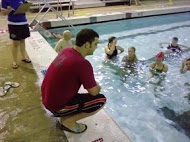
As part of lifeguard first aid, one must be well aware of the procedures required to administer first aid in case a victim gets stung by jellyfish. Contrary to popular belief, human urine does not provide solution for treating jellyfish stings. The reason for this is that the components of urine will only irritate the area of sting, making the injury worse. The same is applicable in cases where victims want to clean the sting with fresh water before treatment can be administered. Application of an icepack to the affected region is also not recommended because this is one of the most common reactions people take in a bid to reduce the swelling as well as alleviate the pain.
There are a number of factors that one must consider before using skills learnt in of lifeguard first aid to address the injuries obtained following a jellyfish sting. These factors include:
– The site of injury where the victim was stung
– The extent of the injury
– The age of the victim
– The location where the stinging occurred.
How do jellyfish stings work?
Even before delving into the techniques that of lifeguard first aid training will equip one with, it is important to have an in depth understanding of the biology behind stings obtained from jellyfish. Jellyfish sting their victims by using nematocysts which are created and allowed to separate from their tentacles. The nematocysts are small tubules which are covered in tiny spines. The spines attach themselves to the human skin, activating the nematocysts and releasing an array of chemicals into the body. It is also critical to take note that even after stinging, some nematocysts may not be activated immediately.
With this understanding, why does lifeguard first aid training prohibit the use of human urine as a form of treatment? Urine alters the ph at the site of injury, and this may trigger the inactive nematocysts to fire, leading to more pain. Granted, some species of jellyfish do not create life threatening conditions, but since it is impossible to know which species has affected an individual, it becomes important to treat jellyfish stings as an emergency.
Symptoms of jellyfish stings
– Labored breathing
– Intense chest pain
– Irregular heart beat when one checks the victim’s pulse
– Spasmic muscles
– Loss o consciousness
– Nausea and general body weakness
Lifeguard first aid: treatment of jellyfish stings
– If you can still see the tentacles, you could try getting rid of them. This will prevent the nematocysts from firing. Use a pair of tweezers
– Alternatively, deactivate the nematocysts, and during the procedure, it is important the victim remains still. Immobility means that the risk of the activation of nematocysts is highly reduced.
– Pour vinegar on the sting in order to deactivate the unfired nematocysts. The use of vinegar in this form of lifeguard first aid is preferred because the acidity neutralizes some of the protein components in the stings.
– Make sure to throw away the clothing that you use to remove the tentacles to prevent coming into contact with the same at a later stage.